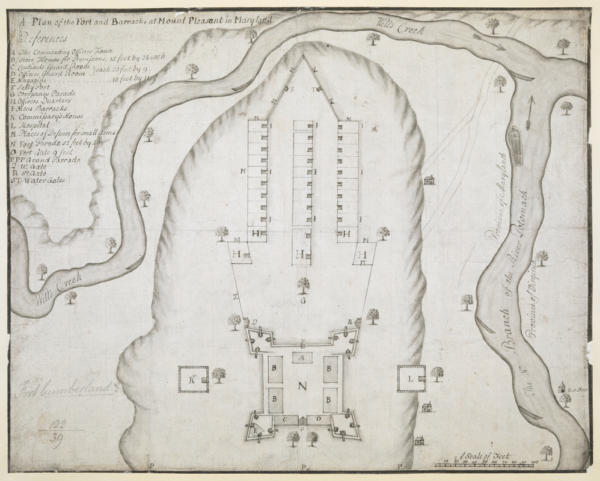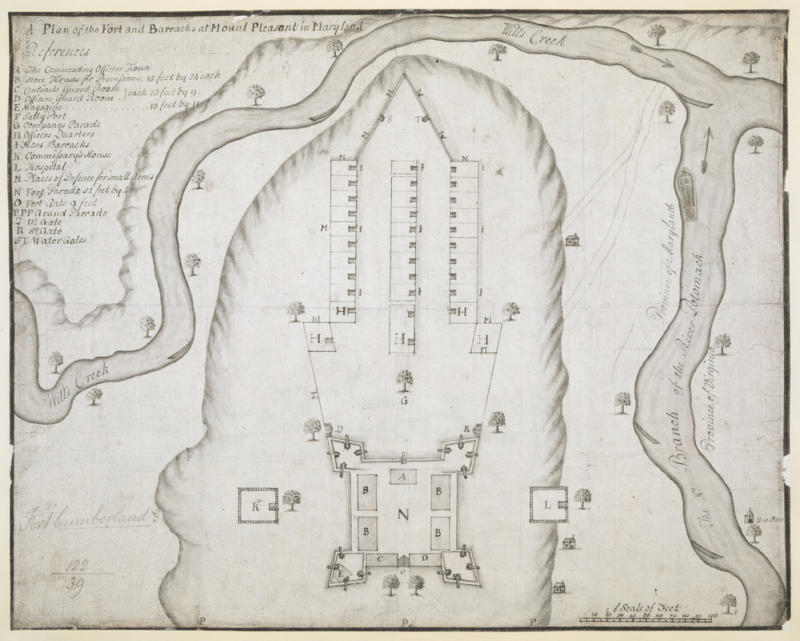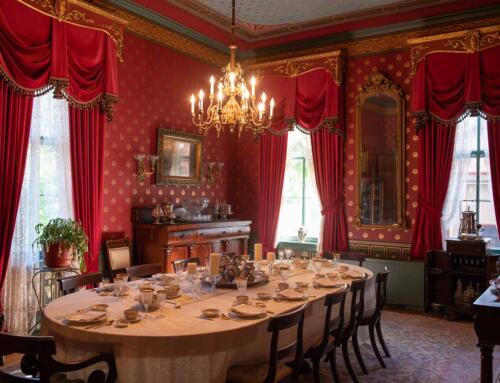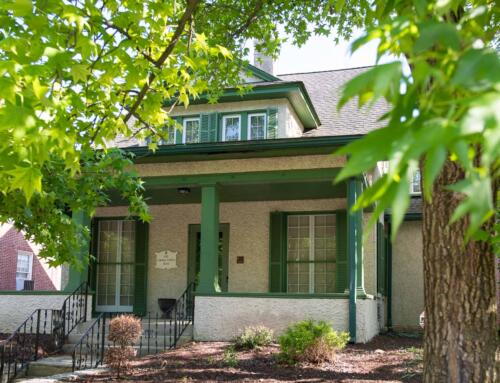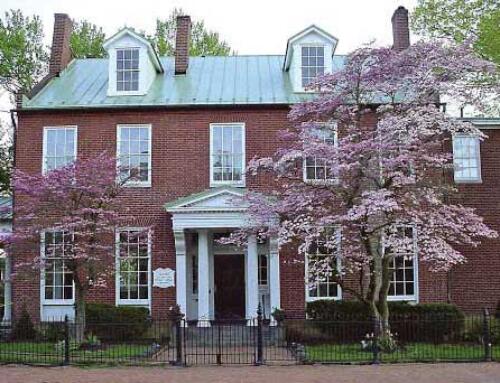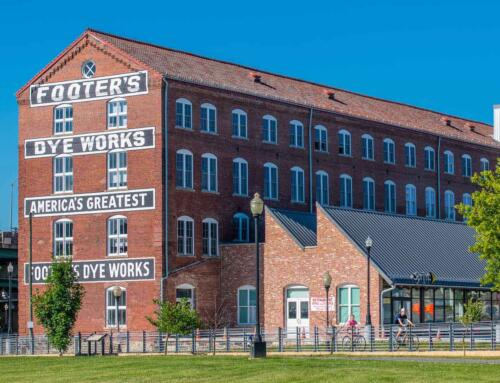Fort Cumberland
Once the western-most outpost of the British Empire in America.
This fort was an important military and economic center during the French and Indian War (1754–63) and figured significantly in the early career of George Washington.
The crude frontier fort was constructed at the confluence of Wills Creek and the Potomac River in fall 1754 by troops of the Maryland militia, under the command of Captain John Dagworthy. Initially named Fort Mount Pleasant, it was renamed Fort Cumberland in 1755.
Download Walking Tour Map
One of the British officers with General Braddock described the newly christened Fort: “It is situated within 200 yards of Will’s Creek, on a hill and about 400 from the Potomack; its length from east to west is about 200 yards, and breadth 46 yards, and is built by logs driven into the ground, and about 12 feet above it.” Eleven days later, he reported that 100 carpenters were at work building a magazine and constructing a bridge over Wills Creek.
Fort Cumberland figured prominently in the French & Indian War in 1755, when it became a rally point for British forces under command of General Braddock. It was the jumping-off point for General Braddock’s disastrous expedition against the French at Fort Duquesne in present-day Pittsburgh, Pennsylvania.
When Braddock was killed, a young officer of Virginia militia, George Washington, led the troops back to Fort Cumberland. At the fort, Washington clashed with Captain Dagworthy over the issue of military rank and which colonial officer should be in command: Washington was a Major in the Virginia militia, outranking the Maryland Captain, but Dagworthy countered that because he also held a Royal commission as a Captain in the Provincial Troops, he automatically outranked any colonial militia officer.
Today, The wood palisade fort is now gone, and occupying the site is the existing Emmanuel Episcopal Church, but the old fort tunnels still remain underneath. Walking around the site, you will see a series of engraved marble markers set into the ground that mark the corners of the fort.
Diagrams and drawings of the Fort exist in the British Museum. A scale model of the fort resides in the Episcopal church. More information can be found at the Allegany Museum.
Fort Cumberland
Once the western-most outpost of the British Empire in America.
This fort was an important military and economic center during the French and Indian War (1754–63) and figured significantly in the early career of George Washington.
The crude frontier fort was constructed at the confluence of Wills Creek and the Potomac River in fall 1754 by troops of the Maryland militia, under the command of Captain John Dagworthy. Initially named Fort Mount Pleasant, it was renamed Fort Cumberland in 1755.
Download Walking Tour Map
One of the British officers with General Braddock described the newly christened Fort: “It is situated within 200 yards of Will’s Creek, on a hill and about 400 from the Potomack; its length from east to west is about 200 yards, and breadth 46 yards, and is built by logs driven into the ground, and about 12 feet above it.” Eleven days later, he reported that 100 carpenters were at work building a magazine and constructing a bridge over Wills Creek.
Fort Cumberland figured prominently in the French & Indian War in 1755, when it became a rally point for British forces under command of General Braddock. It was the jumping-off point for General Braddock’s disastrous expedition against the French at Fort Duquesne in present-day Pittsburgh, Pennsylvania.
When Braddock was killed, a young officer of Virginia militia, George Washington, led the troops back to Fort Cumberland. At the fort, Washington clashed with Captain Dagworthy over the issue of military rank and which colonial officer should be in command: Washington was a Major in the Virginia militia, outranking the Maryland Captain, but Dagworthy countered that because he also held a Royal commission as a Captain in the Provincial Troops, he automatically outranked any colonial militia officer.
Today, The wood palisade fort is now gone, and occupying the site is the existing Emmanuel Episcopal Church, but the old fort tunnels still remain underneath. Walking around the site, you will see a series of engraved marble markers set into the ground that mark the corners of the fort.
Diagrams and drawings of the Fort exist in the British Museum. A scale model of the fort resides in the Episcopal church. More information can be found at the Allegany Museum.


